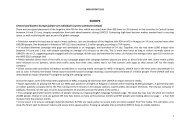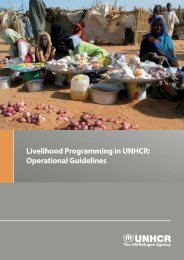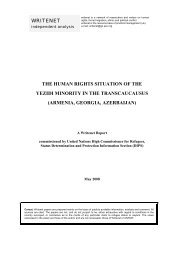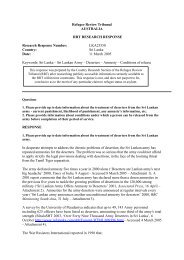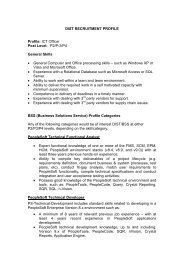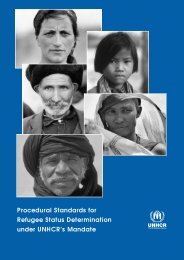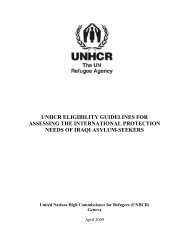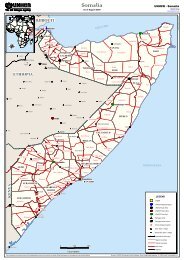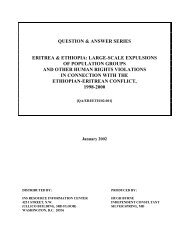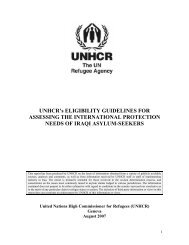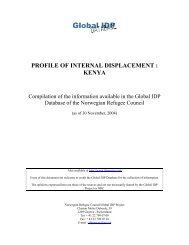CONCLUSIONS ADOPTED BY THE EXECUTIVE ... - UNHCR
CONCLUSIONS ADOPTED BY THE EXECUTIVE ... - UNHCR
CONCLUSIONS ADOPTED BY THE EXECUTIVE ... - UNHCR
Create successful ePaper yourself
Turn your PDF publications into a flip-book with our unique Google optimized e-Paper software.
The Executive Committee,<br />
2007 (Executive Committee—58 th Session)<br />
No. 107 (LVIII) - CONCLUSION ON CHILDREN AT RISK (2007)<br />
Recalling its Conclusions Nos. 47 (XXXVIII), 59 (XL) and 84 (XLVIII), specifically on refugee children and/or<br />
adolescents, Conclusion No. 105 (LVI) on Women and Girls at Risk, Conclusion No. 106 (LVI) on<br />
Identification, Prevention and Reduction of Statelessness and Protection of Stateless Persons, Conclusion No. 94<br />
(LIII) on the Civilian and Humanitarian Character of Asylum, Conclusion No. 98 (LIV) on Protection from<br />
Sexual Abuse and Exploitation, Conclusion No. 100 (LV) on International Cooperation and Burden and<br />
Responsibility Sharing in Mass Influx Situations as well as all provisions of relevance to the protection of<br />
refugee children set out in other Conclusions, many of which are relevant for other children of concern to<br />
<strong>UNHCR</strong>,<br />
Taking note of the more recent international developments in relation to the protection of children, in particular<br />
the two Optional Protocols to the 1989 Convention on the Rights of the Child (CRC), Security Council<br />
resolutions 1612, 1674, and 1325, the Paris Commitments to Protect Children from Unlawful Recruitment or<br />
Use by Armed Forces or Armed Groups and the United Nations Secretary-General's Study on Violence against<br />
Children,<br />
Recognizing the important work done by the United Nations Children's Fund (UNICEF) and non-governmental<br />
organizations (NGOs) in relation to the protection of children,<br />
Affirming that children, because of their age, social status and physical and mental development are often more<br />
vulnerable than adults in situations of forced displacement; recognizing that forced displacement, return to postconflict<br />
situations, integration in new societies, protracted situations of displacement, and statelessness can<br />
increase the vulnerability of children generally; taking into account the particular vulnerability of refugee<br />
children to being forcibly exposed to the risks of physical and psychological injury, exploitation and death in<br />
connection with armed conflict; and acknowledging that wider environmental factors and individual risk factors,<br />
particularly when combined, can put children in situations of heightened risk,<br />
Acknowledging that, while both girls and boys face many of the same protection risks, they also experience<br />
protection challenges specific to their gender, and reaffirming that, while many risks may be prevalent in all<br />
settings, camp and urban environments may generate different protection needs,<br />
Noting that this Conclusion applies to children, as defined under Article 1 of the CRC, who are asylum-seekers,<br />
refugees, are internally displaced or returnees assisted and protected by <strong>UNHCR</strong>, or are stateless, particularly<br />
addressing the situation of those at heightened risk, 1<br />
Recalling that the protection of children is primarily the responsibility of States, whose full and effective<br />
cooperation, action and political resolve are required to enable <strong>UNHCR</strong> to fulfil its mandated functions,<br />
Recognizing the varied means and capacity of host countries; and reaffirming its call to the international<br />
community, in cooperation with <strong>UNHCR</strong> and other international organizations, to mobilize the financial and<br />
other resources necessary, including in support of host communities, to ensure the provision of protection and<br />
material assistance and the achievement of durable solutions, based on international solidarity, cooperation and<br />
burden and responsibility sharing, as well as on the understanding that inadequate protection, or inadequate,<br />
inappropriate or poorly distributed assistance, can increase the risks children face,<br />
(a) Adopts this Conclusion which provides operational guidance for States, <strong>UNHCR</strong> and other relevant agencies<br />
and partners, including through identifying components that may form part of a comprehensive child protection<br />
system, with the aim of strengthening the protection of children at risk;<br />
Fundamentals of child protection<br />
(b) Recognizes that strategies and actions under this operational guidance should be underpinned by the<br />
following principles and approaches, amongst others:<br />
i. Children should be among the first to receive protection and assistance;<br />
1 Hereinafter referred to as "children" or "a child"<br />
190




